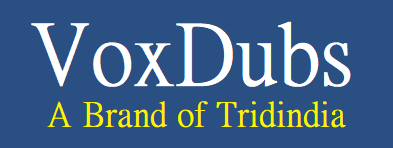Dubbing is an art that transcends language barriers, allowing audiences worldwide to experience films, TV shows, and animations in their native tongue. This intricate process involves replacing the original dialogue with a translated version while synchronizing the lip movements and emotions of the characters.
The seamless integration of voices and visuals is a result of various dubbing methods employed by skilled professionals.
In this blog, we will take a deep dive into the fascinating world of dubbing techniques and explore how they enrich the entertainment industry.
1. Traditional Lip-Sync Dubbing:
The most common and widely recognized method of dubbing is traditional lip-sync dubbing. In this technique, voice actors re-record the dialogue in the target language, aiming to match the lip movements of the original actors as closely as possible.
This method requires precision and attention to detail to create a convincing and immersive experience for the audience.
To achieve lip-sync accuracy, translators must adapt the original script to fit the timing of the character’s lip movements in the foreign language.
Voice actors then watch the original footage and dub their lines while ensuring a seamless match between their performances and the on-screen actions. Post-production teams play a crucial role in cleaning and mixing the audio to achieve a flawless final product.
2. ADR (Automated Dialogue Replacement):
ADR, also known as “looping,” is a technique where actors re-record their lines in a studio after the filming is complete. This method is often used when the original audio quality is insufficient, or there are issues with background noise or other technical limitations.
Actors watch the footage and re-enact their performances to match the lip movements on-screen. ADR is commonly employed in live-action films and TV shows.
While ADR allows for precise control over the audio quality, it can be challenging for actors to recreate the emotions and intensity of their original performances. Skilled voice actors and directors are necessary to ensure that the dubbed lines retain the same emotional impact as the original ones.
3. Voice-Over Narration:
Voice-over narration is a form of dubbing commonly used in documentaries, news programs, and non-fictional content. In this method, a single voice actor narrates the translated script while the original audio remains audible in the background.
Voice-over narration is an effective way to provide information to the audience without interfering with the visuals.
Unlike traditional lip-sync dubbing, voice-over narration does not require precise lip synchronization, making it a more straightforward technique. However, the success of voice-over narration relies heavily on the narrator’s voice and delivery, as they play a central role in engaging the audience.
4. UN Style Dubbing:
The United Nations style of dubbing, often referred to as “simultaneous interpretation,” is used primarily for live events, conferences, and interviews. In this method, interpreters listen to the speaker’s original language and provide a real-time translation in the target language.
This form of dubbing requires exceptional linguistic skills and quick thinking. Interpreters must accurately convey the speaker’s message while considering cultural differences and nuances.
UN style dubbing is a high-pressure task that demands skilled professionals who can maintain focus and clarity even in fast-paced environments.
5. Character Replacement Dubbing:
Character replacement dubbing, also known as “voice replacement,” is a method used when a character’s voice in the original language is unacceptable or inappropriate for the target audience. This may occur due to various reasons, such as cultural sensitivities or mismatched voice characteristics.
In this technique, the voice of the original character is entirely replaced by a new voice actor speaking in the target language. The goal is to create a more suitable portrayal of the character for the specific audience without altering the original visuals or lip movements.
Conclusion:
Accurate Dubbing is a remarkable art that allows stories to transcend linguistic barriers and connect with audiences across the globe.
From traditional lip-sync dubbing to voice-over narration and UN style dubbing, each method serves a specific purpose and requires a unique set of skills.
The success of dubbing techniques lies in the ability to maintain the authenticity of the content while adapting it for different cultures and languages.
As technology continues to advance, the world of dubbing is evolving, enriching the entertainment industry and bringing people closer together through the universal language of storytelling.
For more information contact VoxDubs at +91-8527599201 or grab an instant quote.
